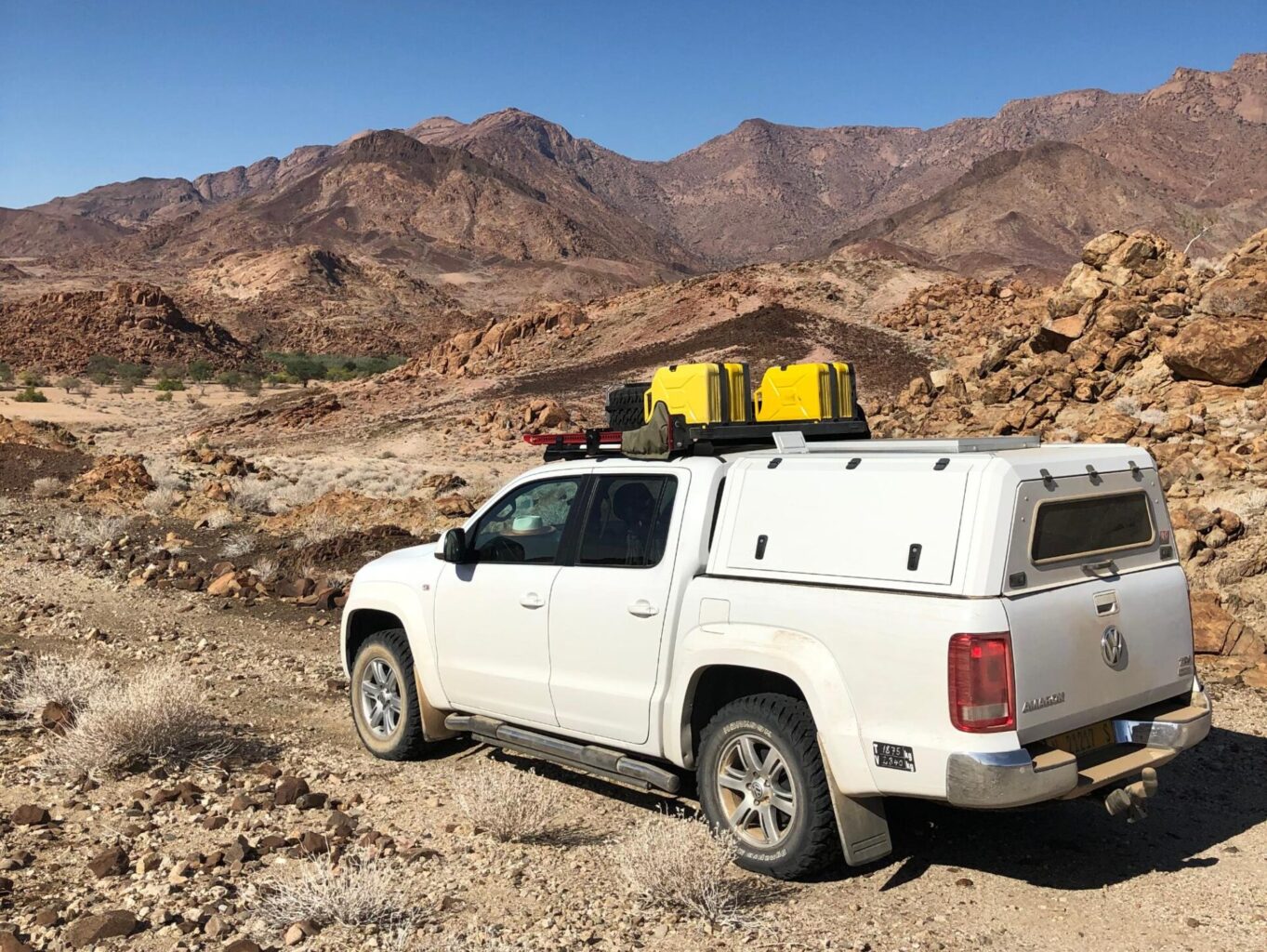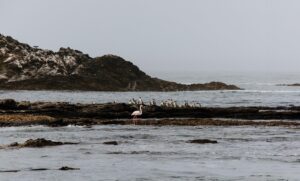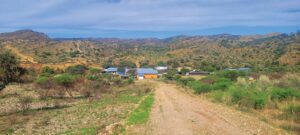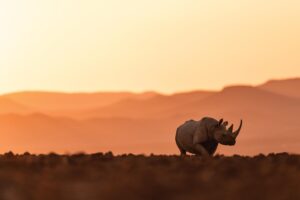

Damaraland
this time from the ground
Text Sandra Windisch | Photographs Sandra Windisch
From the Spring 2021 issue
Before joining the corporate airline world, my husband and I did bush flying for 12 years in Namibia, Angola and Botswana. Now that our girls turned six and seven, we were ready to explore Damaraland differently this time – from the ground with our Amarok and camping trailer.
We were eager to show the girls where Mom and Dad spent a lot of time in their younger days, landing on hard-to-find runways with no windsocks and looking more like old jeep tracks, if anything.
Routing the trip was easy: limited hours spent travelling per day, a nice pool for the girls every other day and as many backroads as possible. We decided to take a satellite phone along to put friends and family somewhat at ease, because even when able to reach the outside world quickly, help would still be days away.
Starting from our home in Swakopmund, we headed for our first stop, the Brandberg White Lady Lodge for two nights. We set up camp under huge old acacia trees right next to the river. Driving up the Ugab River we did not see any elephants, but we did see a black cape cobra catch a puffadder. Well, hubby and kids did. I looked the other way.
Day 3 brought us to Palmwag campsite, our base for the next two nights. Our campsite had a lovely view over the red hills of Damaraland and the spring in front of the lodge. The girls found two cats and soon the four of them were inseparable, going everywhere together.
On day 5 we were geared for no reception and headed into the rough and rugged landscapes of the Palmwag Concession. This is true wilderness – a protected area that covers 550 000 hectares – and is home to, amongst others, endangered black rhino and elephants.
This was our longest day, in every way. We travelled 90 km in 6 hours. The girls were troopers, never complaining, instead counting zebras and giraffes and dressing up their Barbie dolls. We entered the Palmwag Concession at the northernmost gate and stopped at C5 that evening, on a hill overlooking a valley of red stones, with the well-known tabletops in the distance.
Day 6 took us past lovely green grass fields from the rain two weeks earlier. We saw herds of animals and lots of Welwitschias. We decided to go west into the mighty Hoanib River and after a few kilometres, we saw two giraffes and elephant bulls. That night we camped in the Obias Valley under a huge cliff. Perfect for the girls to climb, and for us to have shade.
On day 7 we had plenty of elephant sightings. On the way back to camp we came across a Land Cruiser with a young Swiss couple, also on their own. When asked how they ended up in this part of the world, they answered: “You can only do Etosha once.”
During that night, a very hot and dry wind was blowing and it was impossible to fall asleep. I did for a split second think back of all the grand lodges, equipped with fans and aircons, where we used to stay as pilots. But you were always alone. To be able to be in nature with my own little tribe seemed like first prize, even with the hot wind blowing right onto my face.
On day 9 the Kaokoveld was calling. Up the Obias Valley, we discovered beautiful grass fields and large open plains. When I asked our eldest what she missed most from home, she said her beagles. Her younger sibling answered: the internet. (Somewhere our parenting derailed…)
At Puros Wild we were blown away by the large old shadowy trees, clean campsites and ablutions built into the trees and shrubs. We took a short drive down our old runway. Fortunately, this was now closed after a few incidents. Later back at camp, Rainer was fixing solar panels so I took the girls for a river drive and showed them the Himba village I had remembered. It was so good to teach them about the culture – we love bringing all-things-different to our girls.
We packed for a nice day outing on day 10. We drove west into the Hoarusib and just had all the chairs out and ready for brunch at the Hoarusib Poort, when Rainer discovered fresh lion tracks. The kids had just jumped into the water, but we hastily packed up and drove further west, making our way to the sandcastles. These clay castles are thousands of years old. Sand and water were blown into the gorges, held back by dunes. Small lakes formed and, layer by layer, structures looking like castles appeared.
If hubby was not checking out the solar panels, he was busy getting the tent ready, helping the girls make a fire, pouring me a G&T, or making sure his tribe was safe and happy. Falling asleep that night, I made a mental note: married to the best husband ever!
On day 12 we stayed at Ongongo Waterfall Campsite with its crystal-blue spring and a beautiful waterfall.
Next, we headed to the Twyfelfontein area, staying at Malansrus, an absolute highlight. For once we did not have to set up camp. In fact, we were lounging around the sparkling pool with cold G&Ts by lunchtime. Feeling a bit guilty, but also not.
We spent the last two nights at Madisa Camp, unpacking everything one final time, climbing hills and driving up dry riverbeds while enjoying the boulders and the views from the top.
Day 14 we were heading home, a little sad but also looking forward to a hot shower and no camp setup. This trip bonded us close-knits even closer, and we discovered another fact: it will always, always be Africa for us! TNN
ESSENTIALS:
Board games, satellite phone, more water than you think, ice!






